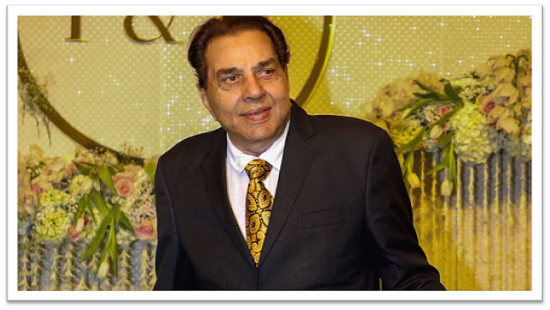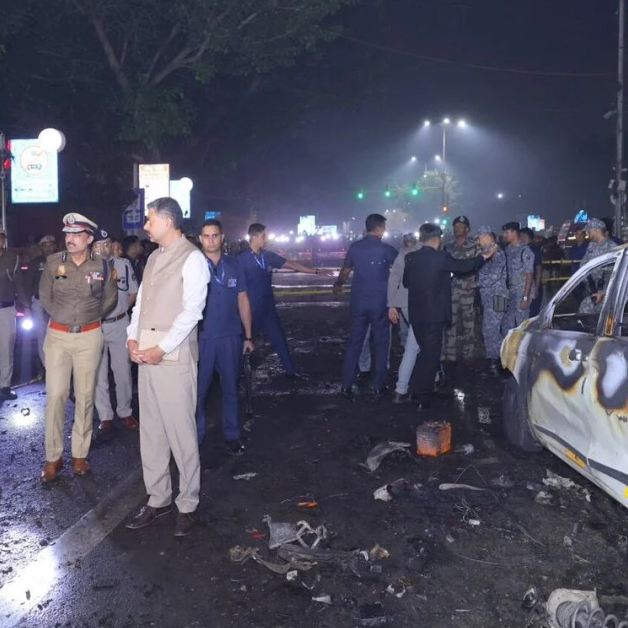
Dharmendra Health Update Turns into Media Frenzy as Fake Death Rumours Spark Outrage and Tight Security at Mumbai’s Breach Candy Hospital
In Mumbai, where celebrity culture thrives and information spreads in seconds, truth often struggles to keep pace with speculation. The recent health scare involving veteran actor Dharmendra Deol, 88, became a prime example of how unverified news can spiral into nationwide panic within hours.
What began as routine medical care for the legendary actor quickly turned into a digital wildfire of false death reports, chaotic crowds, and a scramble for official statements. As Mumbai Police tightened security outside Breach Candy Hospital and the Deol family appealed for calm, the incident exposed the growing crisis of misinformation, sensationalism, and privacy invasion in India’s fast-moving media ecosystem.
The Incident: When Rumours Became Reality Online
On Monday night, unverified posts claiming Dharmendra’s death began circulating across social media platforms. Within minutes, hashtags trended, news aggregators picked up the story, and panic spread among fans. By early Tuesday morning, Mumbai Police were forced to deploy additional personnel outside Breach Candy Hospital to manage the swelling crowd of journalists and well-wishers. Barricades were installed to restrict public access and ensure hospital operations continued smoothly.
Hospital authorities later confirmed that Dharmendra was stable and responding positively to treatment, countering viral claims of a critical condition. According to family sources, the actor had been admitted for routine medical care and was not on ventilator support.
The Family’s Response: Dignity Amid Digital Distortion
Dharmendra’s wife, actress and BJP MP Hema Malini, arrived at the hospital early Tuesday and expressed deep disappointment over the spread of false reports. Taking to X (formerly Twitter), she wrote, “What is happening is unforgivable! How can responsible channels spread false news about a person who is responding to treatment and is recovering? This is being extremely disrespectful and irresponsible. Please give due respect to the family and its need for privacy.”
Her words reflected not only a wife’s distress but also a larger frustration shared by many public figures in India’s digital age. Their daughter, Esha Deol, also issued a statement saying, “The media seems to be in overdrive and spreading false news. My father is stable and recovering. We request everyone to give our family privacy. Thank you for the prayers for papa’s speedy recovery.”
Following their clarifications, several media outlets retracted speculative stories and issued apologies. But the emotional and reputational harm had already been done, raising serious questions about the ethics of digital journalism.
The Anatomy of a Viral Falsehood
India’s digital environment has become fertile ground for misinformation. With over 470 million social media users and more than 600 million smartphone connections, information travels faster than verification. In Dharmendra’s case, unverified claims spread through messaging apps and social media timelines long before credible news agencies could issue corrections.
Experts in digital media ethics argue that India’s misinformation challenge is now systemic. A 2023 Reuters Institute study found that nearly 45 percent of Indian internet users encountered false or misleading health-related news within the past year. Celebrity news, with its emotional and cultural resonance, often acts as a catalyst that magnifies such distortions.
The Media’s Dilemma: Speed vs. Credibility
The episode forces an uncomfortable introspection within the media industry. Why do established outlets rush to publish before verifying? The answer lies in the economics of digital attention. In the race to be first, accuracy often takes a back seat to visibility. Algorithms reward engagement, not truth, and sensationalism generates more clicks than caution.
Dharmendra’s case highlights the deeper crisis of credibility haunting digital media today. As immediacy becomes the new metric for relevance, verification becomes an afterthought. The result is a collapse of public trust that, once broken, is nearly impossible to rebuild.
Privacy in the Age of Public Curiosity
Beyond the fake reports, the incident reignited debate about celebrity privacy. Public figures like Dharmendra, who have defined Indian cinema for decades, live under constant public scrutiny. But illness and recovery demand empathy, not exposure.
Legal experts point out that while the Digital Personal Data Protection Act (2023) offers stronger privacy protections, its applicability to media and public figures remains ambiguous. Without a robust ethical framework, families remain vulnerable to intrusive and speculative reporting that blurs the line between public interest and sensationalism.
The Role of Digital Responsibility
This episode should serve as a moment of reckoning for both journalists and the public. Fact-checking, credible sourcing, and responsible reporting are no longer professional virtues, they are ethical imperatives. Newsrooms must strengthen verification processes, particularly when reporting on sensitive or health-related matters.
For audiences, awareness and restraint are equally important. Studies show that false news spreads six times faster than factual reporting on social media. Every share, forward, and retweet carries a moral cost, and digital literacy is now a civic responsibility.
The Broader Implication: Restoring Trust in Information
In the long run, the Dharmendra episode may become a defining moment in India’s evolving digital ethics narrative. It underscores the urgent need for newsroom accountability, responsible algorithms, and greater public media literacy. Like financial systems that rely on transparency for stability, the information economy depends on trust. When that trust collapses, institutions, reputations, and social harmony collapse with it.
As of now, Dharmendra continues to recover steadily, supported by his family and well-wishers. Security remains tight outside Breach Candy Hospital, but the real challenge extends far beyond its gates, the task of rebuilding public faith in accurate, humane, and ethical reporting.
Conclusion: The Lesson from Breach Candy
The Dharmendra health incident is more than a celebrity news cycle, it is a reflection of our collective media behaviour. It reveals how unchecked virality, emotional sensationalism, and declining verification standards can transform simple events into nationwide hysteria.
Yet amid this noise lies an opportunity, for journalists to prioritize integrity over speed, for audiences to think before sharing, and for society to reclaim empathy over sensationalism. In an age obsessed with being first, perhaps the true mark of progress is the ability to pause, verify, and wait for the truth.




